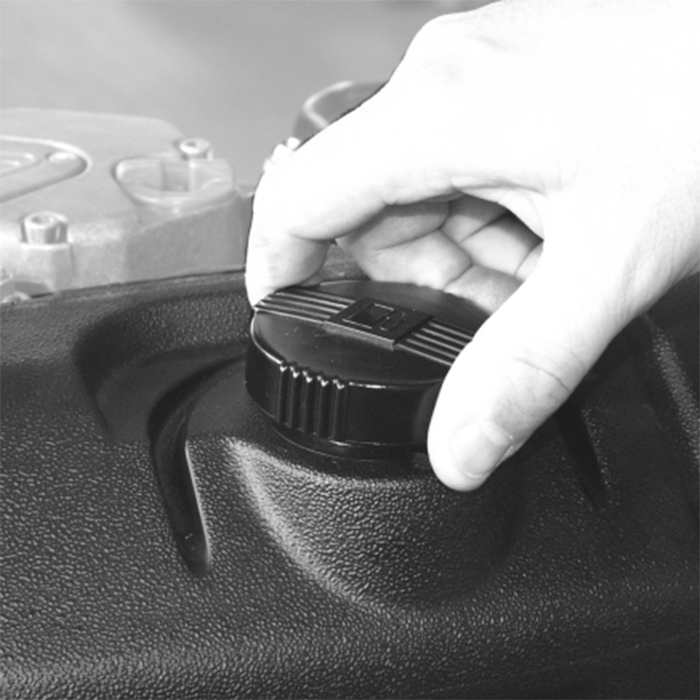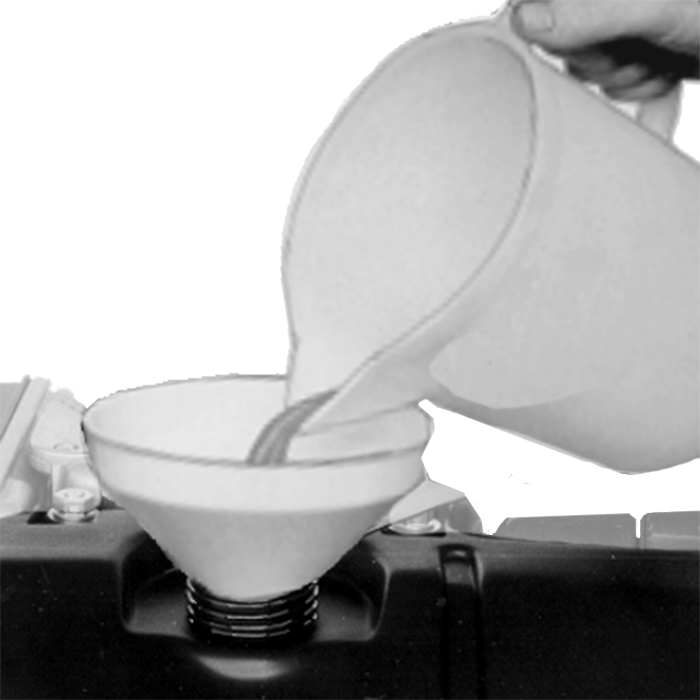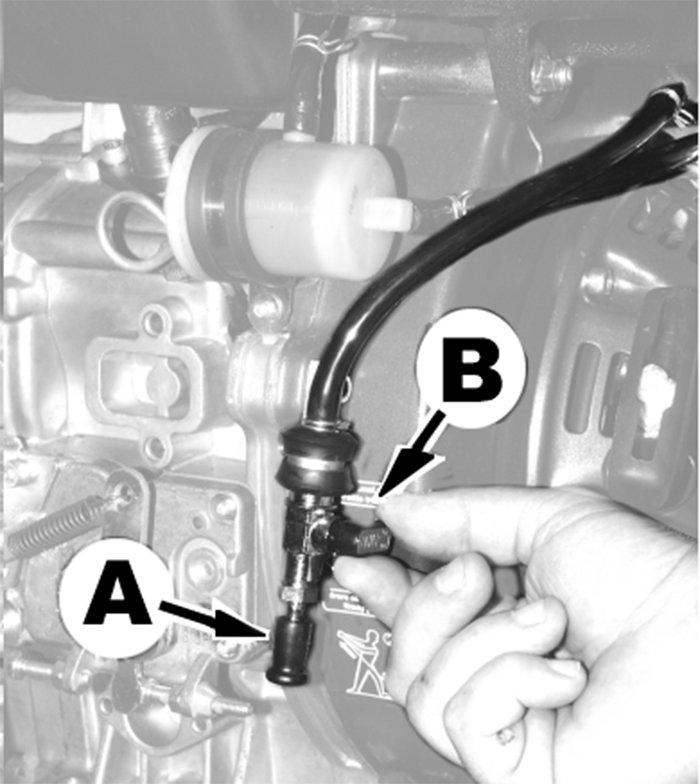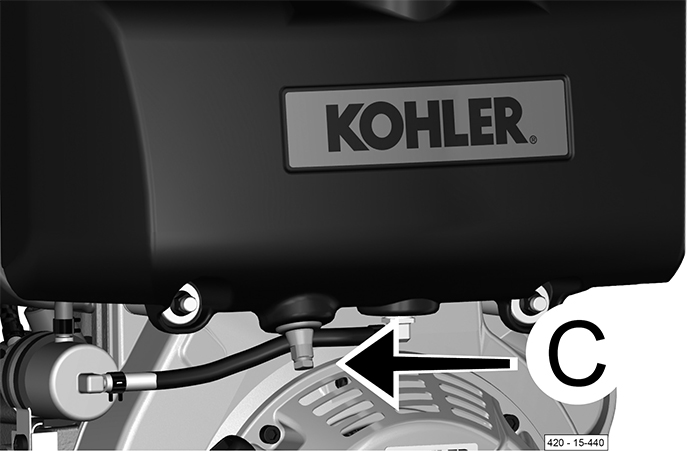1
General information

2
Technical information

NOTE: Dimensions vary according to engine configuration. Fig. 2.1 - Fig. 2.2
Important The engine may be damaged if operated with improper oil level. Do not exceed the MAX level because a sudden increase in engine rpm could be caused by its combustion. Use only the recommended oil to ensure adequate protection, efficiency and service life of the engine. The use of lubricants other than recommended may shorten the engine life. Viscosity must be appropriate to the ambient temperature to which the engine is to be exposed. Danger Prolonged skin contact with the exhausted engine oil can cause cancer of the skin. If contact with oil cannot be avoided, thoroughly wash your hands with soap and water as soon as possible. For the exhausted oil disposal, refer to the Par. DISPOSAL and SCRAPPING. 2.4.1 SAE oil classification In the SAE classification, oils are identified according to viscosity without considering any other qualitative characteristic. The code is composed of two numbers, which indicate, and must correspond to, the ambient temperature in which the engine operates, the first number refers to the viscosity when cold, for use during winter ("W"), while the second number is for viscosity at high temperatures. Use oil viscosity based on the experienced air temperature range during the period between oil changes as indicated in the table below. Kohler / Rehlko X-treme 10W-40 formula pro; X-treme 10W-40; X-treme 5W-40 oil are preferred: Oils meeting the following specifications are also recommended. 2.2 RECCOMENDED OIL TCR STAGE-V (*1) (*2) TCR TIER IV FINAL (*1) TCR/D TIER III o NON CERTIFICATO (*3) WITH SPECIFICATIONS API CJ-4 Low S.A.P.S CK-4 Low S.A.P.S CJ-4 Low S.A.P.S CK-4 Low S.A.P.S CI-4 Plus CI-4 CH-4 ACEA E6 Low S.A.P.S. E6 Low S.A.P.S. E7 E4 VISCOSITY SAE 0w-40 (-40°C ÷ +50°C) 5w-40 (-30°C ÷ +50°C) 10w-40 (-25°C ÷ +50°C) 0w-40 (-40°C ÷ +50°C) 5w-40 (-30°C ÷ +50°C) 10w-40 (-25°C ÷ +50°C) 0w-40 (-40°C ÷ +50°C) 5w-40 (-30°C ÷ +50°C) 10w-40 (-25°C ÷ +50°C) Low S.A.P.S. technology (oil with low Sulfated Ash, Phosphorus, Sulfur content) keeps catalyst in good working conditions. The presence of sulfated ash, phosphorus and sulfur causes with time the catalyst clogging and its consequent inefficiency. For Mid S.A.P.S oil sequence the sulfated ash level is the same as API CJ-4 ≤ 1.0% but as per ACEA standardization those oils are referenced as mid SAPS. Filtration of oils is critical to proper operation and lubrication; always change filters regularly as specified in this manual. (*1) NOTE: Do NOT use fuel with sulphur content above 15ppm. (*2) - On all engines compliant with Stage-V emission regulation (engines with DPF device), the oil to use must comply with the specification API CJ-4 Low S.A.P.S or ACEA E6 Low S.A.P.S. (*3) - NOTE: Do NOT use fuel with sulphur content above 500ppm. (*3) - NOTE: Low S.A.P.S. oils, sulfate ashes <1% may not be used with fuels with a sulfur content >50ppm.
Battery not supplied by Kohler Tab. 2.6 RECOMMENDED BATTERIES AMBIENT TEMPERATURE BATTERY TYPE ≥ - 15°C 120 Ah/20 h - 1000 CCA/SAE < -15°C 130 Ah/20 h - 1100 CCA/SAE
3
Safety information

ACCIDENTAL START Accidental Starts can cause severe injury or death. Before working on the engine or equipment, disconnect the battery negative (-) wire. HOT PARTS Hot Parts can cause severe burns. Engine components can get extremely hot from operation. Do not touch engine while operating or just after stopping. Never operate the engine with heat shields or guards removed. ROTATING PARTS Rotating Parts can cause severe injury. Stay away while engine is in operation. Keep hands, feet, hair, and clothing away from all moving parts to prevent injury. Never operate the engine with covers, shrouds, or guards removed. LETHAL EXHAUST GASES Carbon Monoxide can cause severe nausea, fainting or death. Avoid inhaling exhaust fumes and never run the engine in a closed building or confined area. Carbon monoxide is toxic, odorless, colorless, and can cause death if inhaled. ELECTRICAL SHOCK Electrical Shock can cause injury. Do not touch wires while engine is running. HIGH PRESSURE FLUID RISK OF PUNCTURE High Pressure Fluids can puncture skin and cause severe injury or death. Do not work on fuel system without proper training or safety equipment. Fluid puncture injuries are highly toxic and hazardous. If an injury occurs, seek immediate medical attention. EXPLOSIVE FUEL Explosive fuel can cause fires and severe burns. Fuel is flammable and its vapours can ignite. Store fuel only in approved containers, in well ventilated, unoccupied buildings. Do not fill the fuel tank while the engine is hot or running, since spilled fuel could ignite if it comes in contact with hot parts or sparks from ignition. Do not start the engine near spilled fuel. Never use fuel as a cleaning agent. EXPLOSIVE GAS Explosive Gas can cause fires and severe acid burns. Charge battery only in a well ventilated area. Keep sparks, open flames, and other sources of ignition away from the battery at all times. Batteries produce explosive hydrogen gas while being charged. Keep batteries out of the reach of children. Remove all jewelry when servicing batteries. Before disconnecting the negative (-) ground cable, make sure all switches are OFF. If ON, a spark will occur at the ground cable terminal which could cause an explosion. CALIFORNIA WARNING - DECLARATION 65 Engine exhaust from this product contains chemicals known to the State of California to cause cancer, birth defects, or other reproductive harm.
Every organisation has a duty to implement procedures to identify, assess and monitor the influence of its own activities (products, services, etc.) on the environment. Procedures for identifying the extent of the impact on the environment must consider the following factors: - Liquid waste. - Waste management. - Soil contamination. - Atmospheric emission. - Use of raw materials and natural resources. - Regulations and directives regarding environmental impact. In order to minimise the impact on the environment, KOHLER now provides a number of indications to be followed by all persons handling the engine, for any reason, during its expected lifetime. - All components and fluids must be disposed of in accordance with the laws of the country in which disposal is taking place. - Keep the fuel and engine control systems and the exhaust pipes in efficient working order to limit environmental and noise pollution. - When discontinuing use of the engine, select all components according to their chemical characteristics and dispose of them separately.
4
Storage information

5
Information regarding discharge of liquids

6
Information for replacing the functional units

7
Information for disassembly

8
Information about overhauling

9
Assembly information

10
Fluids filling information

11
Information about optional components

12
Information on adjustments

13
Tools information

14
Information about failures

15
Glossary


Refueling
|
To avoid explosions or fire outbreaks, do not smoke or use naked flames during the operations. |
|
|
|
|
|
Remove fuel tank cap. Pour the fuel and reassemble fuel tank cap.
|
Fig. 4.20 |
|
With low ambient temperatures (-10°C) add specific additives to diesel fuel, to avoid paraffine crystals solidification. |
Fig. 4.21 |
|
TANK DRAIN SYSTEM
|
|
|
To eliminate any possible water and dirt residue from the tank bottom, remove the plug (A) and open the cock (B) to enable discharging. Once the operation is over, close the cock and screw back the protecting plug. |
Fig. 4.22 |
|
For motors 420 and 15-440, unscrew the screw C to allow the escape of water and dirt. Upon completion of the transaction tighten the screw C. |
Fig. 4.23 |











 Loading
Loading